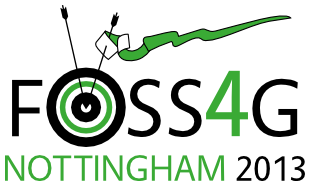Presentation
Storing, Querying, And Mapping Global Collection Of Night-time Light Data With Open Source GIS Software
Qing Liu (University of Denver)
09:30 on Saturday 21st September (in Session 48, starting at 9 a.m., EMCC: Room 3)
Show in Timetable
Nocturnal lighting is a unique indicator of human activity that can be measured from space. The widespread use of outdoor lighting is a relatively recent phenomenon, tracing its roots back to the electric light bulb commercialized by Thomas Edison in the early 1880s. Since that time nocturnal lighting has emerged as one of the hallmarks of modern development and provides a unique attribute for identifying the presence of development or human activity that can be sensed remotely. Nighttime light imagery as an unusual remote sensing data source offers capabilities to represent human activities on the Earth's surface through the observation of artificial lighting at night. Interest in satellite remote sensing of nocturnal lighting stems, in part, from the difficulty in global mapping of human settlements in a repeatable, timely manner from traditional sources. The remote sensing of nocturnal lighting provides an accurate, economical, and straightforward way to map the global distribution and density of developed areas. The Defense Meteorological Satellite Program (DMSP) was originated in the mid-1960s by the US Department of Defense for collecting worldwide cloud cover on a daily basis. The DMSP program has been repeatedly upgraded over time since it was officially declassified in 1972 and made available to the civilian and scientific community. The latest series incorporated the Operational Linescan System (OLS). Digital OLS data was archived by National Oceanic and Atmospheric Administration’s National Geophysical Data Center (NOAA-NGDC) since 1992. The DMSP-OLS global nighttime lights products have been used as a surrogate for a range of socio-economic indicators including population, Gross Domestic Product (GDP), energy consumption, urban typology, and CO2 emissions. Other sources of nighttime light data include the recently launched Visible Infrared Imaging Radiometer Suite (VIIRS) on Suomi NPP satellite with a “day/night band” observing dim light sources, and photographs taken by astronaut aboard International Space Station (ISS) providing more detailed nighttime lights information with much higher spatial resolution. NOAA-NGDC has developed a series of procedures to generate global cloud-free composites of DMSP nighttime lights. The DMSP-OLS data products as well as the newly produced VIIRS nighttime light data products have been archived by NGDC and made available for public download from their website. Nighttime light data products can be downloaded in their raw raster format, which can be then processed and analyzed by researchers who possess sufficient knowledge about the data products. However, there is currently no effective interface to browse and analyze nighttime light data for users who are interested in this type of remote sensing data source but do not possess professional remote sensing image processing software packages. The needs and challenges of storing, querying, and mapping a global data collection of nocturnal lighting are significant. PostGIS Raster as the raster support in PostGIS provides the capabilities to operate vector and raster data in a seamless fashion. Following an open source philosophy, this project aims to build an interactive web interface using PostgreSQL + PostGIS, GeoServer and Cartodb in the front-end. Global raster collection of nighttime light data products will be stored in PostgreSQL with PostGIS Raster support. Spatial queries can be conducted seamlessly on the raster data with other vector layers. Statistical summary of nighttime light intensities can be generated through the aggregation of raster values within geographic boundaries at national and sub-national level. The goal is to store the global collection of nighttime light data products in a queryable raster format in PostgreSQL, develop a web application for the visualization and seamlessly interactive vector/raster queries on the nighttime light data, and develop the API for developers to query and retrieve nighttime light data to feed their own applications.
